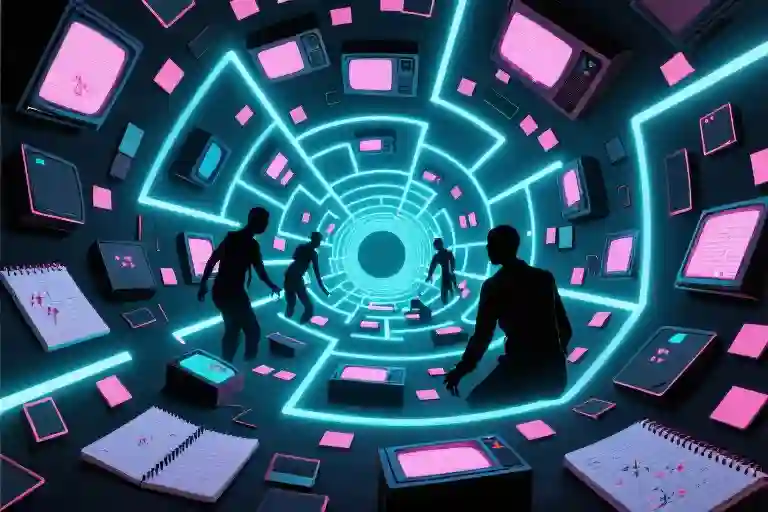The coffee’s gone cold again. You’ve been staring at the sentence for seventeen minutes—“Eleanor paused at the subway turnstile, her hand trembling”—but Eleanor remains cardboard-thin. She’s your seventh attempt this month at crafting a character who breathes, yet she’s still just verbs and adjectives clinging to a name. Sound familiar?
We’ve all been that writer. The cruel irony? You’re infinitely complex—a walking contradiction of childhood scars, secret playlists, and inexplicable fears about escalators—yet when creating fictional beings, you suddenly become a baker using only flour. No salt. No yeast. Certainly no unexpected cardamom.
The Puppeteer’s Dilemma
Here’s the rub: Real humans are messy constellations, but writers work through solitary telescopes. Whether we’re:
- First-person spelunkers (digging through one psyche’s caves)
- Third-person drones (hovering behind a protagonist’s shoulder)
- Omniscient sorcerers (manipulating worlds like Sims characters)
…we ultimately filter everything through one consciousness—yours. It’s like trying to conduct an orchestra while playing every instrument.
Last Tuesday, my writing group became a battleground:
- Psychological Realist (Glasses pushed up, quoting Virginia Woolf): “Depth comes from dissecting a single soul like frog anatomy!”
- Multi-POV Evangelist (Tattoos swirling as she gestures): “You want truth? Show how Eleanor’s enemy sees her chipped nail polish!”
- Worldbuilder (Calmly folding origami dragons): “Zoom out. Her trembling hand matters because the subway’s funded by corrupt politicians.”
Their clash revealed an uncomfortable truth—great characters emerge when we surrender control.
Method #1: The Memory Thief (First-Person Alchemy)
Try this: Close your eyes. Recall someone who unnerved you—the barista who always hums showtunes off-key. Now become them writing Eleanor’s scene:
“That woman at the turnstile’s faking it. I’ve seen real tremors—my dad’s hands shook holding the divorce papers. She just wants strangers to notice her damn vintage ring.”
Why it works: You’re not imagining a character—you’re hijacking lived experiences. Those three a.m. insecurities? The joy of finding a perfect avocado? That’s your gold.
Method #2: The Perspective Jukebox (Shifting Views)
George R.R. Martin didn’t just write Westeros—he haunted it. Try his trick:
- Write Eleanor’s scene from her perspective
- Rewrite it from her rival’s POV
- Now the subway security guard watching the drama
Suddenly, Eleanor’s “trembling” isn’t just nerves—it’s:
- To Eleanor: Fear the engagement ring means entrapment
- To Rival: Proof Eleanor’s weak
- To Guard: A potential mental health crisis he’s unprepared for
Pro tip: Use objects as perspective anchors. That ring? To Eleanor it’s a cage. To her rival, it’s a trophy. To the guard, it’s glitter distracting from real threats.
Method #3: The God Lens (Omniscient Whispering)
J.R.R. Tolkien could’ve written Frodo’s PTSD as personal angst. Instead, he zoomed out:
“The weight of the Ring made all roads feel like slopes downward, all choices like traps laid centuries before his birth.”
Now apply that to Eleanor:
“The turnstile’s chrome bars reflected seven generations of women in Eleanor’s family—those who married for safety, those who fled for air, all whispering through her blood.”
Warning: This isn’t “info-dumping”—it’s layering personal drama with societal forces.
Your Fusion Toolkit
- The Crow’s Nest Exercise
- Write a heated argument between three characters
- Now rewrite it from the POV of:
- A fly on the wall
- The whiskey glass being slammed down
- The childhood photo on the mantel
- Sensory Stealing
Next café visit, note:
- How the barista’s laugh sounds (gravelly? nervous?)
- What the cashier’s nail polish reveals (chips = overworked? neon green = rebellious?)
- Why someone chose that corner table (sunlight? escape route?)
- Conflict Cocktails
Merge:
- A want you deeply understand (e.g., “to feel heard”)
- A fear that baffles you (e.g., “terror of elevators”)
- A societal force (e.g., “algorithmic dating culture”)
Voilà—you’ve got Clara, who compulsively joins protest marches (want) but panics in crowded subways (fear), all while her Tinder-driven friend group mocks her “analog activism” (society).
When Characters Rebel
My greatest humiliation? I once wrote a detective who insisted on quoting French poetry during stakeouts. I tried deleting it. He kept reappearing like literary herpes.
Then a beta reader commented: “His Baudelaire obsession makes sense—it’s how he mourns his sister who loved Paris.”
The lesson: What feels like “out-of-character” moments might be your subconscious stitching deeper truths.
The Aliveness Test
Ask about your character:
- What’s in their fridge right now?
- What song do they secretly play on repeat?
- What would make them trade their moral code for survival?
If answers come easily—congratulations, you’re a multi-mind. If not, revisit Methods 1-3 until Eleanor starts rearranging your life.
The blank page isn’t a void—it’s a stage crowded with ghosts waiting for you to give them breath. Even if they end up hating you for it.





